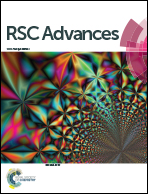A drug release switch based on protein-inhibitor supramolecular interaction†
Abstract
In this report, we describe a new system in which mesoporous silica nanoparticles (MSNs) are gated with α-chymotrypsin A protein (CTRA) and the cargoes within the vehicles are released in the presence of phenylmethanesulfonyl fluoride (PMSF), a canonical inhibitor of CTRA. This cargo release switch is based on the specific interaction between CTRA and PMSF as well as structural changes upon their supramolecular complex formation. This host–guest gating system works smoothly both in vitro and within cells. This type of bio-switch may be extended to other drug carrier systems by using diverse protein–inhibitor pairs that exist in nature.


 Please wait while we load your content...
Please wait while we load your content...